Table of Contents
⭐ Furnace Won’t Turn On?
We have all been there. You drop off to sleep in winter only to wake up at an ungodly hour in the morning to find that your heating system has failed and the temperatures have dropped to Arctic levels in your bedroom.
Typically, this issue could be solved with just a quick trip to the furnace to restart it, but when you find that your furnace won’t turn on, no matter what you do, you could be in for a cold and sleepless night.
If this article doesn’t help your gas furnace blow hot air again, you’ll want to call a qualified HVAC company fast.
Below, we’ll take you through some problems and solutions for why your propane or natural gas furnace won’t turn on.
⭐ What to Check When Your Furnace Doesn’t Start
⭐ 1. Reset Your Circuit Breaker
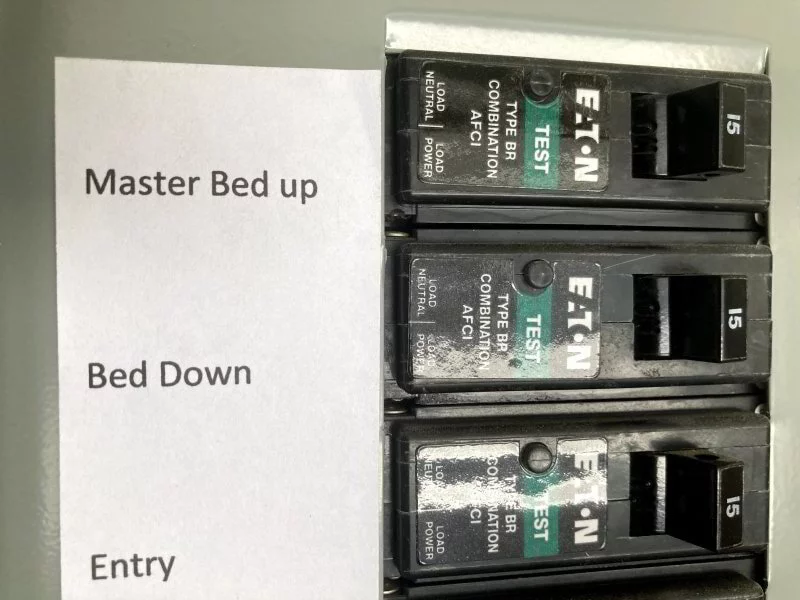
Although many furnaces are fueled by natural gas or propane, some components require electricity to work.
Among these components are electric ignition systems, the blower motor, the gas valve, the control board, the furnace draft inducer motor, the programmable thermostat, the pilot light, and the flame sensor.
As you can see, electricity is required for your heating system to function properly.
If your furnace won’t turn on, there are two power switches to check.
The circuit breaker in your circuit breaker panel and the furnace service switch in your furnace room.
If the problem is a tripped circuit breaker, you’ll need to fully turn it to the OFF position and back to the ON position.
If the circuit breaker trips immediately after switching it back to the ON position, then there is an electrical short somewhere in the furnace, and you’ll need to call an experienced HVAC technician to troubleshoot.
🧰 1a. Turn on Your Furnace Service Switch
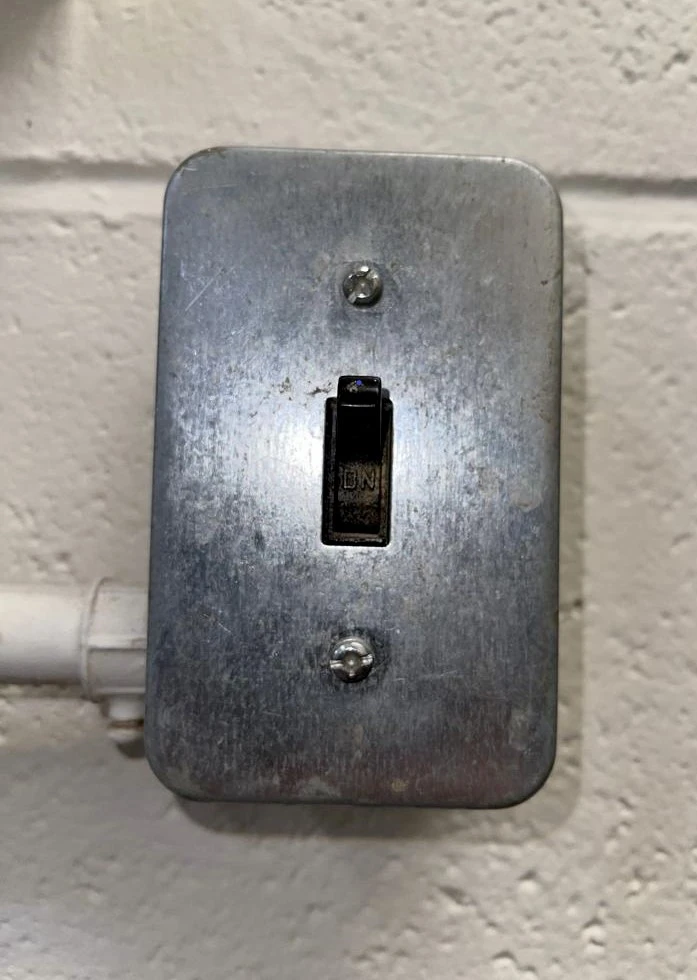
The easiest power issue to fix, and one that happens quite regularly is when someone turns the furnace service switch off, thinking it is a light switch.
This switch should be labeled, but if it isn’t then, you’ll want to make sure you add a label.
If this is the case, flip the switch back to ON and check to see if the furnace power is back on.
⭐ 2. Troubleshoot Your Thermostat
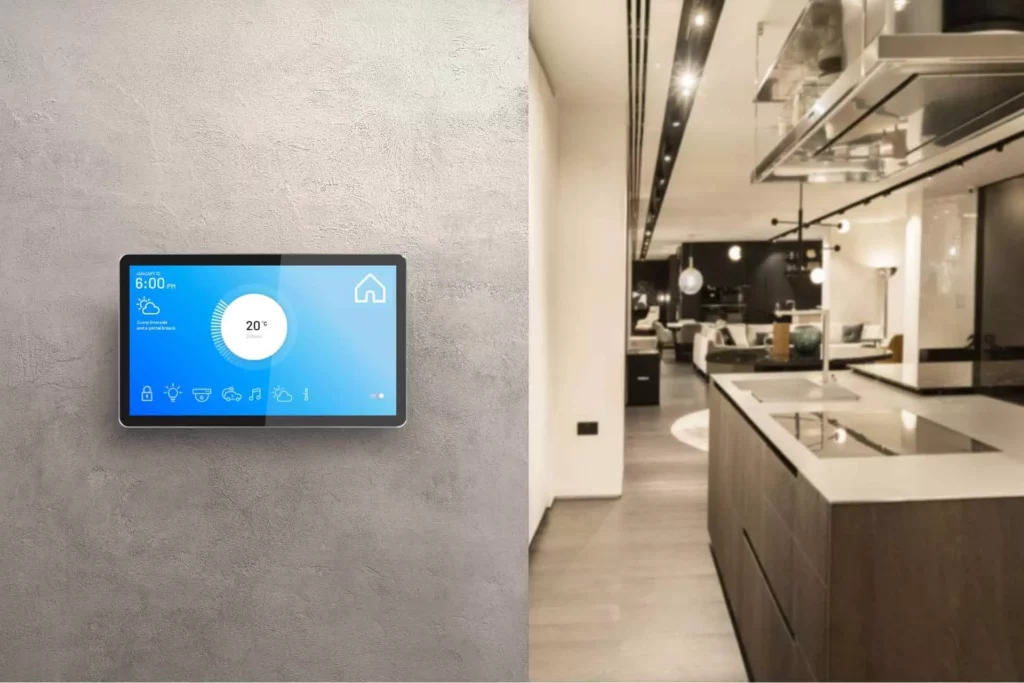
Another common cause of a furnace with ignition problems is a malfunctioning thermostat.
It is worth checking to see whether the thermostat has lost its programming, it isn’t set to “HEAT”, the thermostat wires are disconnected, or the batteries may be dead.
🧰 Thermostat Settings
If you have a programmable thermostat, you should check to see what the schedule and settings are for the heating system. The other usual suspect is when people don’t switch their thermostat from COOLING to HEATING after the summer.
🧰 Broken Thermostat Wires
This one doesn’t happen much, but if you’ve done any renovations lately, it’s possible that someone accidentally cut the thermostat wire or pulled it a little, causing the wires to come disconnected.
To determine if this is what happened, you can visually inspect where the t-stat wires connect to the furnace and the t-stat.
If they’re connected, then your next step is to check for 24 volts leaving the furnace on the R terminal and coming back to the furnace on the W terminal.
If you have 24v leaving the furnace, and you’ve confirmed that the thermostat is set to HEAT and the temp is turned up, but you don’t have 24 volts coming back on the W terminal, then either the wires are broken, or the t-stat needs to be replaced.
A quick way to confirm if it’s the thermostat or the wires is to temporarily install the thermostat near the furnace, effectively bypassing the wires.
If it still doesn’t run then the problem is the t-stat.
If it does run, then you’ll need to replace the wires.
⭐ 3. Check Your HVAC System Air Filter
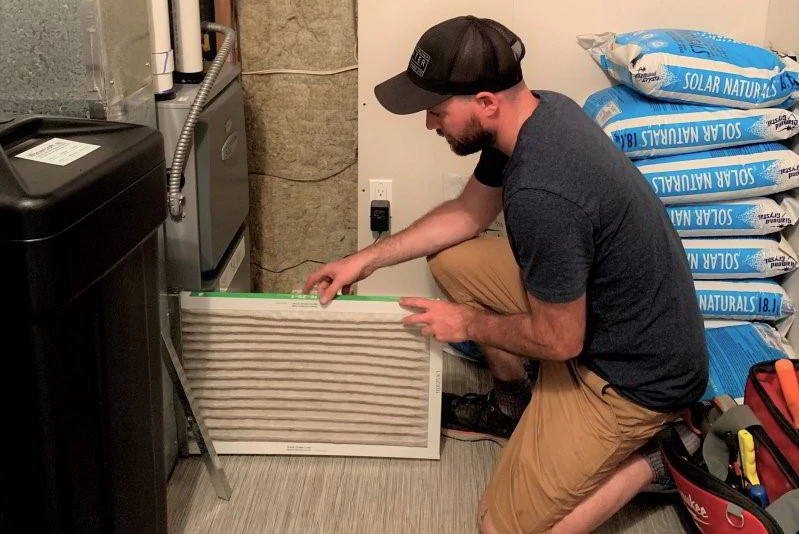
An HVAC System, whether heating, cooling, or both, will be equipped with safety features that cause them to shut off when the air filter is dirty or clogged and needs changing.
Why is a dirty air filter bad for my furnace?
A dirty air filter is bad for your furnace because the heat exchanger needs sufficient air to flow across it in order for the heat to be removed.
If it’s not removed fast enough, a furnace high-limit switch will be tripped.
If your furnace continues to operate this way, your heat exchanger will prematurely burn out.
Why is a dirty air filter bad for my Air Conditioner?
Dirty filters are bad for your Air Conditioner because the evaporator coil above the furnace needs to absorb enough heat from the air, so it doesn’t freeze up.
If it does freeze up, the low-pressure switch in your AC system will shut it down (not all AC systems have this built-in protection).
How do I change my furnace air filter?
To change your old air filter, open or slide the door panel to get access to the furnace.
The filter is normally located near where the cold air enters the furnace in the cold air duct or at the blower motor chamber entrance.
Remove the old air filter and replace it with the new filter.
✅ PRO TIP: It’s a good idea to label each filter with a marker pen with the date it was installed to keep track of when you should next replace it.
Also, take note of the airflow direction when changing air filters.
Mark that on your air handler with a marker to ensure you replace your furnace filters the right way each time.
✅ NOTE: If you have not changed your furnace filter in more than 90 days, this is likely to be what is causing your ignition issues.
⭐ 4. Try Cleaning the Condensate Drain Components
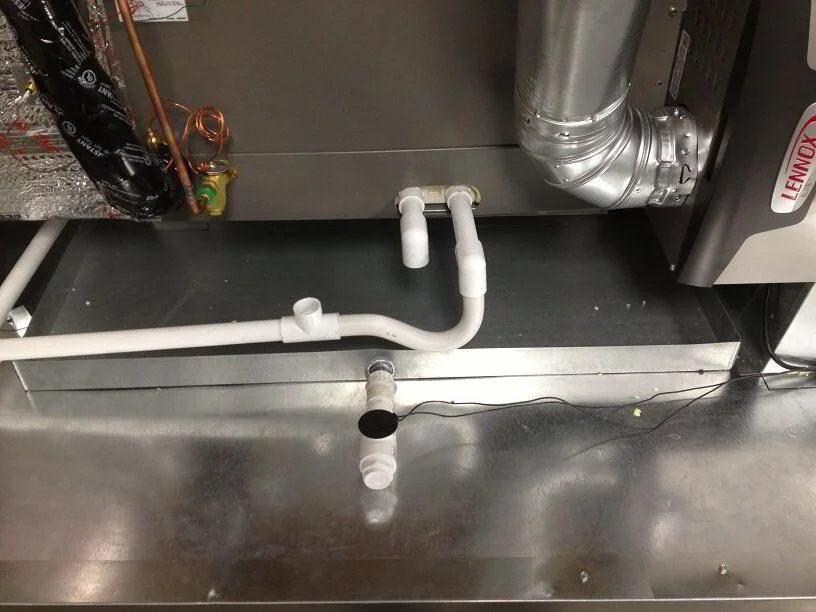
All high-efficient furnaces take so much heat out of the flue gases that the exhaust condenses on the vent piping and then drains back to the furnace condensate trap, which is then piped down to the floor drain or a condensate pump.
🧰 Clean the condensate trap
This trap can collect slime and dust and will eventually plug up.
You’ll need to remove it from the furnace to rinse it out.
🧰 Clean the condensate drain line
This can be done with a flexible brush or by using a shop vac to suck out any blockages.
For full details on how to do this, you should read our complete article on How to Fix a Clogged Furnace Condensate Drain Line.
🧰 Check the Condensate Pump Float Switch
If your HVAC system uses a condensate pump and has the float switch wired into the furnace controls, this is something to check.
If your condensate pump has stopped working or the discharge line is plugged, the float switch will stop your furnace or AC from running.
If this is the case, you’ll need to confirm whether the pump has failed or if the discharge line is plugged.
The simple way to confirm this is to listen to see if the pump is trying to run but not removing any water from the reservoir.
If that’s the case, you may need to replace the discharge tubing.
⭐ 5. Inspect Your Pilot Light, Flame Ignitor, and Furnace Flame Sensor
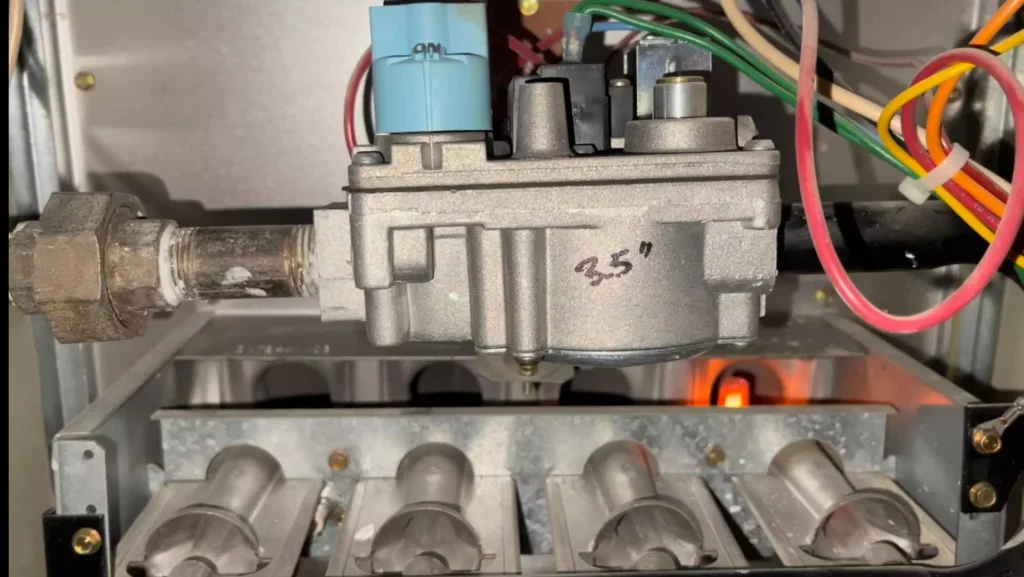
Most propane or natural gas furnaces will not ignite unless the furnace pilot light is burning or the hot surface ignitor works correctly.
And if they do light but won’t stay lit, it’s most likely because of the furnace flame sensor.
You can usually see where the pilot light is on through a small glass window somewhere on the furnace.
If you find that it has gone out, you should follow the furnace troubleshooting instructions that came with the unit to reignite it.
The pilot light should be no other color than electric blue when burning
If it is burning purple, green, orange, or red, it is a sign that the furnace has been infiltrated by a substance that does not belong there.
In many cases, this substance will be dust.
A possible solution to this problem may be to remove the door panel and wipe down all of the furnace’s interior components.
Check the condition of the furnace burners while you are checking out the internals of your furnace.
However, if it’s the furnace flame sensor or electronic ignitor, it’s best to leave this to your local furnace repair company.
⭐ 6. Check the Fuel Supply
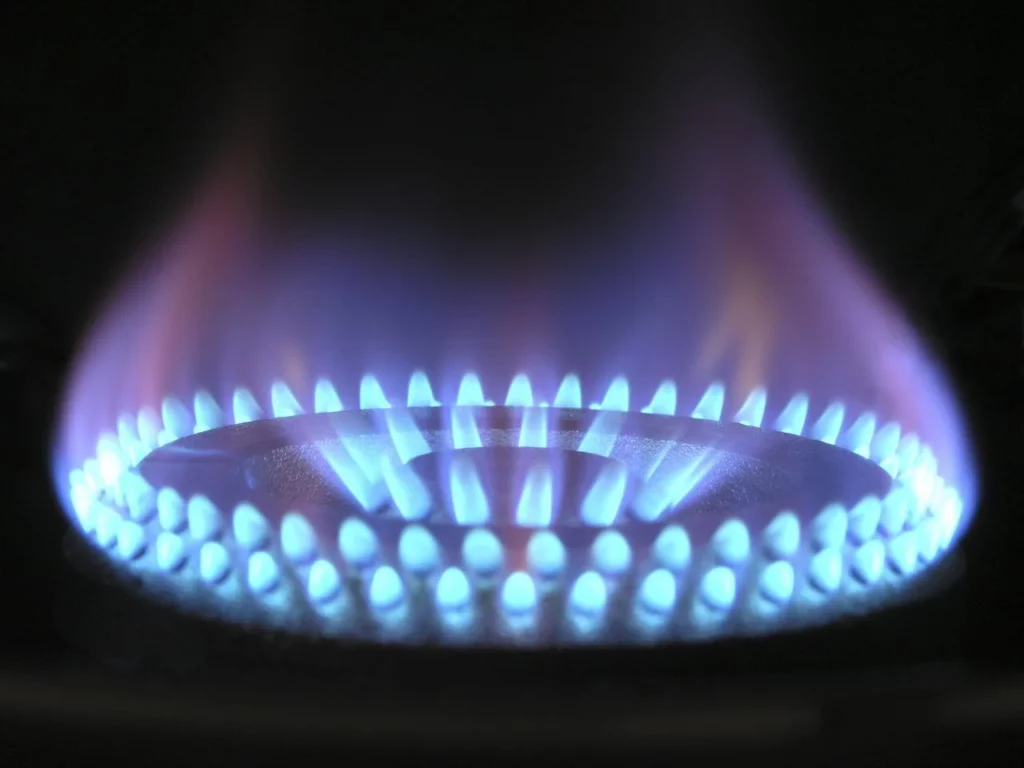
When troubleshooting ignition problems, the final thing you should check is whether the furnace has access to fuel.
In some cases, the only problem why a furnace won’t turn on may be that it is not receiving gas for some reason or other.
Most of the time, gas valves have been turned off for summer (or for not paying your bills).
If you have a gas furnace, you can check whether your gas line is working by turning on another gas appliance, such as your water heat or gas range.
If you find that gas is not reaching your other appliances, then there is no problem with your furnace.
You should call your gas supplier immediately to inform them of the issue and have them come around to resolve it.
However, if you have problems with a gas line, the gas valve itself, or a gas leak (propane and natural gas smell like rotten eggs), this is best left to the professionals.
🛑 STOP: A gas leak can be hazardous.
If you smell gas, isolate your gas supply if safe to do so.
Call 911 and get out of the house if this doesn’t stop the problem.
⭐ Calling in a Professional Furnace Repair Contractor
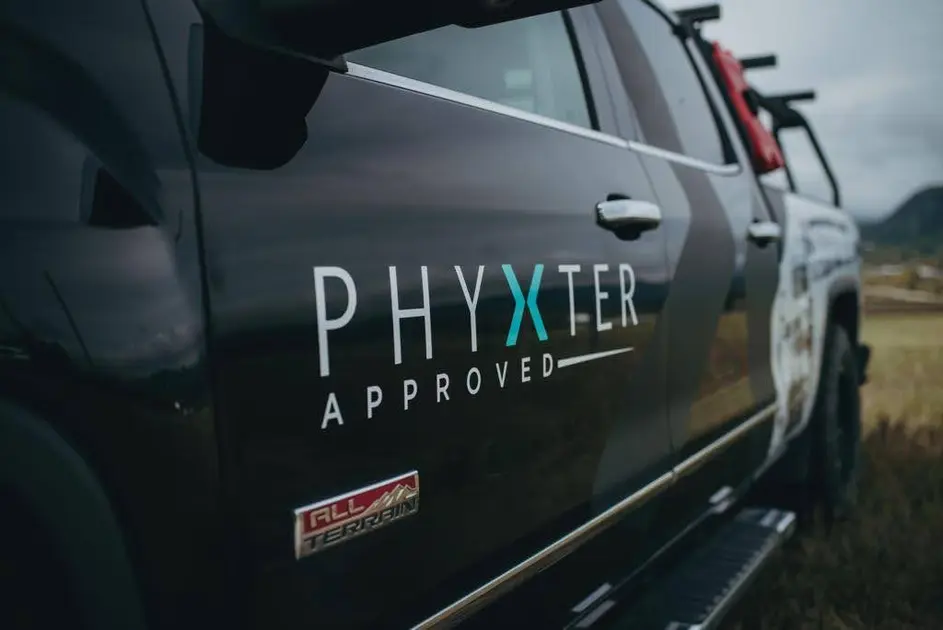
If you have tried the solutions listed above without any success, it’s time to call in a professional HVAC technician.
An HVAC Pro is experienced in furnace troubleshooting.
They will quickly diagnose your furnace problems and offer you the most cost-effective solution to restoring your furnace to having warm air as soon as possible.
They will also ensure that your furnace aligns with the latest safety guidelines to help keep you and your family safe and healthy.
Items such as a broken heat exchanger can be expensive and potentially deadly if not diagnosed correctly.
Licensed HVAC companies have the knowledge, skills, and tools to fix all possible furnace problems on the spot.
So make the most of your money and get the right professional advice the first time.
Related Reading: My Furnace Won’t Turn Off, What Now?
Want to learn more about your home’s heating system? Feel free to check out our other furnace articles!

